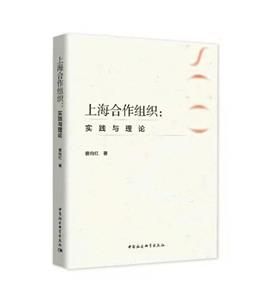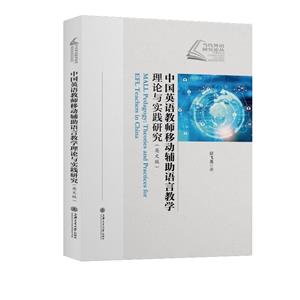
作者:(英)厄灳 著
页数:379
出版社:外语教学与研究出版社
出版日期:2000
ISBN:9787560020501
电子书格式:pdf/epub/txt
内容简介
在编辑这个文库时,我们在两方面下了功夫。
一方面,在选书时,我们求全,求新,求有代表性和前瞻性。我们不偏爱一家之言,也不只收一家外国出版社之书。语言学与应用语言学的主干学科固然受到了应有的重视,分支学科可也不忽视。语料语言学、语言统计学是新兴学科,我们收入了专著;句法学、语义学久已有人研究,我们也找到了有关的最新著作。
另一方面,我们邀请了国内知名的博士生导师、硕士生导师为各书撰文导读,为读者铺平道路。语言学和应用语言学专著包罗宏富,初学者读起来可能觉得茫无头绪。为了助他们一臂之力,本文库中每一种书我们都请专家写了一万字左右的导读材料。哪怕书中内容比较陌生,谁只要在读书前看一下导读材料,读书后把材料再看一遍,一定能弄清脉络,掌握要点。
目录
units with a symbol are components of the ‘core’ course; those with a symbol are ‘optional’
preface by halliday
王宗炎序
导读
acknowledgements
read this first: to the (trainee) teacher to the trainer
introduction
part i the teaching process
module 1: presentations and explanations
unit one: effective presentation
unit two: examples of presentation procedures
unit three: explanations and instructions
module 2: practice activities
unit one: the function of practice
unit two: characteristics of a good practice activity
unit three: practice techniques
unit four: sequence and progression in practice
module 3: tests
unit one: what are tests for?
unit two: basic concepts; the test experience
unit three: types of test elicitation techniques
unit four: designing a test
unit five: test administration
part ii teaching the language(1)the’what’
module 4: teaching pronunciation
unit one: what does teaching pronunciation involve?
unit two: listening to accents
unit three: improving learners’ pronunciation
unit four: further topics for discussion
unit five: pronunciation and spelling
module 5: teaching vocabulary
unit one: what is vocabulary and what needs to be taught?
unit two: presenting new vocabulary
unit three: remembering vocabulary
unit four: ideas for vocabulary work in the classroom
unit five: testing vocabulary
module 6: teaching grammar
unit one: what is grammar?
unit two: the place of grammar teaching
unit three: grammatical terms
unit four: presenting and explaining grammar
unit five: grammar practice activities
unit six: grammatical mistakes
module 7: topics, situations, notions, functions
unit one: topics and situations
unit two: what are notions and functions?
unit three: teaching chunks of language: from text to task
unit four: teaching chunks of language: from task to text
unit five: combining different kinds of language segments
part iii teaching the language(2):the’how’
module 8: teaching listening
unit one: what does real-life listening involve?
unit two: real-life listening in the classroom
unit three: learner problems
unit four: types of activities
unit five: adapting activities
module 9: teaching speaking
unit one: successful oral fluency practice
unit two: the functions of topic and task
unit three: discussion activities
unit four: other kinds of spoken interaction
unit five: role play and related techniques
unit six: oral testing
module 10: teaching reading
unit one: how do we read?
unit two: beginning reading
unit three: types of reading activities
unit four: improving reading skills
unit five: advanced reading
module 11: teaching writing
unit one: written versus spoken text
unit two: teaching procedures
unit three: tasks that stimulate writing
unit four: the process of composition
unit five: giving feedback on writing
part iv course content
module 12: the syllabus
unit one: what is a syllabus?
unit two: different types of language syllabus
unit three: using the syllabus
module 13: materials
unit one: how necessary is a coursebook?
unit two: coursebook assessment
unit three: using a coursebook
unit four: supplementary materials
unit five: teacher-made worksheets and workcards
module 14: topic content
unit one: different kinds of content
unit two: underlying messages
unit three: literature (1): should it be included in the course?
unit four: literature (2): teaching ideas
unit five: literature (3): teaching a specific text
part iv lessons
module 15: lesson planning
unit one: what does a lesson involve?
unit two: lesson preparation
unit three: varying lesson components
unit four: evaluating lesson effectiveness
unit five: practical lesson management
module 16: classroom interaction
unit one: patterns of classroom interaction
unit two: questioning
unit three: group work
unit four: individualization
unit five: the selection of appropriate activation techniques
module 17: giving feedback
unit one: different approaches to the nature and function of feedback
unit two: assessment
unit three: correcting mistakes in oral work
unit four: written feedback
unit five: clarifying personal attitudes
module 18: classroom discipline
unit one: what is discipline?
unit two: what does a disciplined classroom look like?
unit three: what teacher action is conducive to a disciplined classroom?
unit four: dealing with discipline problems
unit five: discipline problems: episodes
part vi learner differences
module 19: learner motivation and interest
unit one: motivation: some background thinking
unit two: the teacher’s responsibility
unit three: extrinsic motivation
unit four: intrinsic motivation and interest
unit five: fluctuations in learner interest
module 20: younger and older learners
unit one: what difference does age make to language learning?
unit two: teaching children
unit three: teaching adolescents: student preferences
unit four: teaching adults: a different relationship
module 21: large heterogeneous classes
unit one: defining terms
unit two: problems and advantages
unit three: teaching strategies (1): compulsory + optional
unit four: teaching strategies (2): open-ending
unit five: designing your own activities
part vii and beyond
module 22: and beyond
unit one: teacher development: practice, reflection, sharing
unit two: teacher appraisal
unit three: advancing further (1): intake
unit four: advancing further (2): output
trainer’s notes
bibliography
index
文库索引
preface by halliday
王宗炎序
导读
acknowledgements
read this first: to the (trainee) teacher to the trainer
introduction
part i the teaching process
module 1: presentations and explanations
unit one: effective presentation
unit two: examples of presentation procedures
unit three: explanations and instructions
module 2: practice activities
unit one: the function of practice
unit two: characteristics of a good practice activity
unit three: practice techniques
unit four: sequence and progression in practice
module 3: tests
unit one: what are tests for?
unit two: basic concepts; the test experience
unit three: types of test elicitation techniques
unit four: designing a test
unit five: test administration
part ii teaching the language(1)the’what’
module 4: teaching pronunciation
unit one: what does teaching pronunciation involve?
unit two: listening to accents
unit three: improving learners’ pronunciation
unit four: further topics for discussion
unit five: pronunciation and spelling
module 5: teaching vocabulary
unit one: what is vocabulary and what needs to be taught?
unit two: presenting new vocabulary
unit three: remembering vocabulary
unit four: ideas for vocabulary work in the classroom
unit five: testing vocabulary
module 6: teaching grammar
unit one: what is grammar?
unit two: the place of grammar teaching
unit three: grammatical terms
unit four: presenting and explaining grammar
unit five: grammar practice activities
unit six: grammatical mistakes
module 7: topics, situations, notions, functions
unit one: topics and situations
unit two: what are notions and functions?
unit three: teaching chunks of language: from text to task
unit four: teaching chunks of language: from task to text
unit five: combining different kinds of language segments
part iii teaching the language(2):the’how’
module 8: teaching listening
unit one: what does real-life listening involve?
unit two: real-life listening in the classroom
unit three: learner problems
unit four: types of activities
unit five: adapting activities
module 9: teaching speaking
unit one: successful oral fluency practice
unit two: the functions of topic and task
unit three: discussion activities
unit four: other kinds of spoken interaction
unit five: role play and related techniques
unit six: oral testing
module 10: teaching reading
unit one: how do we read?
unit two: beginning reading
unit three: types of reading activities
unit four: improving reading skills
unit five: advanced reading
module 11: teaching writing
unit one: written versus spoken text
unit two: teaching procedures
unit three: tasks that stimulate writing
unit four: the process of composition
unit five: giving feedback on writing
part iv course content
module 12: the syllabus
unit one: what is a syllabus?
unit two: different types of language syllabus
unit three: using the syllabus
module 13: materials
unit one: how necessary is a coursebook?
unit two: coursebook assessment
unit three: using a coursebook
unit four: supplementary materials
unit five: teacher-made worksheets and workcards
module 14: topic content
unit one: different kinds of content
unit two: underlying messages
unit three: literature (1): should it be included in the course?
unit four: literature (2): teaching ideas
unit five: literature (3): teaching a specific text
part iv lessons
module 15: lesson planning
unit one: what does a lesson involve?
unit two: lesson preparation
unit three: varying lesson components
unit four: evaluating lesson effectiveness
unit five: practical lesson management
module 16: classroom interaction
unit one: patterns of classroom interaction
unit two: questioning
unit three: group work
unit four: individualization
unit five: the selection of appropriate activation techniques
module 17: giving feedback
unit one: different approaches to the nature and function of feedback
unit two: assessment
unit three: correcting mistakes in oral work
unit four: written feedback
unit five: clarifying personal attitudes
module 18: classroom discipline
unit one: what is discipline?
unit two: what does a disciplined classroom look like?
unit three: what teacher action is conducive to a disciplined classroom?
unit four: dealing with discipline problems
unit five: discipline problems: episodes
part vi learner differences
module 19: learner motivation and interest
unit one: motivation: some background thinking
unit two: the teacher’s responsibility
unit three: extrinsic motivation
unit four: intrinsic motivation and interest
unit five: fluctuations in learner interest
module 20: younger and older learners
unit one: what difference does age make to language learning?
unit two: teaching children
unit three: teaching adolescents: student preferences
unit four: teaching adults: a different relationship
module 21: large heterogeneous classes
unit one: defining terms
unit two: problems and advantages
unit three: teaching strategies (1): compulsory + optional
unit four: teaching strategies (2): open-ending
unit five: designing your own activities
part vii and beyond
module 22: and beyond
unit one: teacher development: practice, reflection, sharing
unit two: teacher appraisal
unit three: advancing further (1): intake
unit four: advancing further (2): output
trainer’s notes
bibliography
index
文库索引















